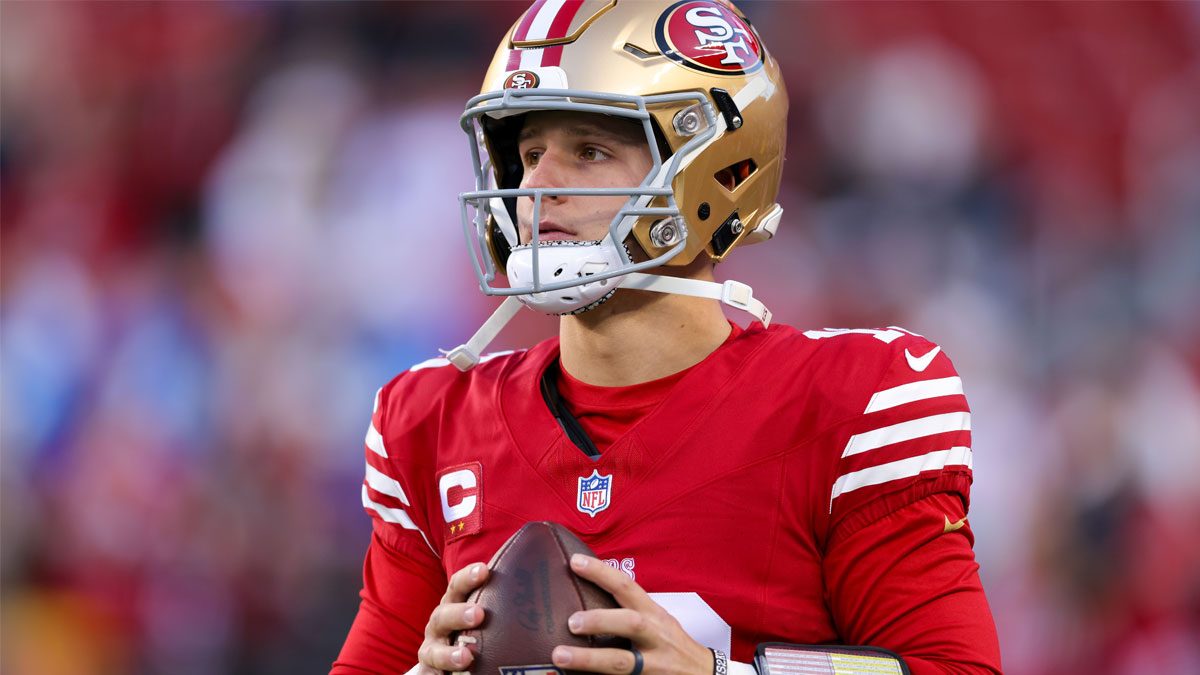The NFL revised its concussion protocol in the wake of a controversy surrounding Dolphins quarterback Tua Tagovailoa. Here’s how it works.
The concussion recently suffered by Miami Dolphins quarterback Tua Tagovailoa showed that understanding and properly managing head injuries remains a continuously evolving lesson.
The NFL and NFLPA altered the league’s concussion protocols in the wake of the Tagovailoa controversy, with the quarterback having been cleared to return to the game despite showing signs of instability and went on to suffer a concussion in the Dolphins’ next game four days later.
After decades of denying the magnitude of football players’ head injuries and subsequent brain disorders, the NFL has developed stricter standards to help protect players who are hit in the head. The game-day concussion protocol was first released in 2011. The NFL Head, Neck and Spine Committee, which includes physicians and NFL Players Association advisors, reviews the protocol each year to make sure that players don’t reenter games if they display symptoms such as dizziness or confusion.
With our All Access Daily newsletter, stay in the game with the latest updates on your beloved Bay Area and California sports teams!
But who decides if a player enters concussion protocol, and what happens if they do? Here’s how it works.
What happens when an NFL player is hit in the head?
Three medical experts, known as unaffiliated neurotrauma consultants (UNCs), are assigned to each game to help ensure that the protocol is followed. When a player is hit in the head, they receive medical attention if they report symptoms or if someone else -- who could be a trainer, official, coach or even teammate -- initiates the protocol.
The first step is for the team physician and UNC to evaluate the player on the sideline, which includes checking their cervical spine, speech, gait and eyes. The play in which the player was hit is also reviewed on video to determine the severity of the impact.
If the sideline survey reveals any symptoms consistent with a concussion, the player is examined further in the locker room for more neurological symptoms.
The player could be cleared after either of these exams and be able to return to the game, but if so, they will have a follow-up the next day to make sure they aren’t experiencing any more symptoms.
However, if the player is diagnosed with a concussion, they cannot return to play in another game until passing the return-to-participation protocol.
What happens if a player shows signs of ataxia?
San Francisco 49ers
Find the latest San Francisco 49ers news, highlights, analysis and more with NBC Sports Bay Area and California.
A player exhibiting symptoms of ataxia – which is defined as “abnormality of balance/stability, motor coordination or dysfunctional speech caused by a neurological issue” – no longer can be cleared to return to the game under the new concussion protocols revised in the wake of the Tagovailoa incident.
Ataxia joins a list of already established criteria a player must meet in order to return to play. That includes no-go symptoms such as consciousness, gross motor instability, confusion, amnesia, fencing response and impact seizure.
The protocol changes went into effect during Week 5 and were exercised when the Dolphins backup quarterback Teddy Bridgewater, starting in place of Tagovailoa, sustained a hard hit on Miami’s first offensive snap of the game. The veteran quarterback passed his concussion test but was deemed ineligible to return because he was displaying signs of ataxia.
Bridgewater was the first player removed from a game under the league’s new protocols.
That same week, tight end Pat Freiermuth was one of two members of the Pittsburgh Steelers to exit with a concussion. It was the third concussion Freiermuth has suffered while in the NFL despite having played in just 21 regular-season games over his first two seasons.
When can an NFL player in concussion protocol return to play?
Players returning from a concussion must be cleared by their team’s physician as well as the independent neurological consultant (INC). Every NFL team is required to have at least one INC, who is a board-certified physician with expertise in head trauma.
There is no set timeline for players in concussion protocol. The medical staff considers factors such as the player’s concussion history and other medical history in determining when it’s safe for them to return.
Generally, though, the protocol outlines five phases, beginning with symptom limited activity, when the player may still be feeling the effects of the concussion. Then the player can progress to regular aerobic exercise, football specific exercise and non-contact training drills before finally being cleared for full football activity.
The process sometimes only takes a few days, like it did for Patrick Mahomes during the playoffs in 2021. Other times, athletes may continue feeling effects such as headaches for weeks or even months after the injury


